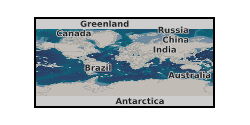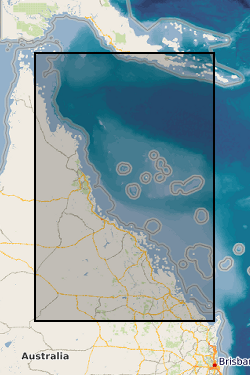Coral
Type of resources
Available actions
Topics
Keywords
Contact for the resource
Provided by
Years
Formats
Update frequencies
-

Boron isotope and trace metal measurements of fibrous aragonite in modern deep-sea coral Desmophyllum dianthus and associated CDIAC (Carbon Dioxide Information Analysis Center) hydrographic data. Atlantic Ocean, Pacific Ocean, Southern Ocean
-

Amino acid compositions of coral skeletons from 4 massive Porites spp. genotypes (G4, G5, G6, G7) cultured in an aquarium at seawater pCO2 of 180, 260, 400 and 750 µatm and at seawater temperature of 25 and 28°C. Protein was extracted from the skeletal samples and hydrolysed to individual amino acids. Data were collected to determine how environmental conditions influence coral skeletal biomolecules. Data were collected between August 2020 and December 2022 by Celeste Kellock, Cristina Castillo Alvarez, David Evans and Nicola Allison and interpreted by Celeste Kellock, Cristina Castillo Alvarez, David Evans, Nicola Allison, Adrian Finch, Kirsty Penkman, Roland Kröger, and Matthieu Clog.
-

Aragonite precipitations rates of precipitations from seawater, using a pH stat titrator using the constant composition technique between September 2021 and December 2022. Aragonite precipitation rates are estimated from the rate of titrant dosing. Data were collected to determine how changes in the calcification fluids of calcareous organisms affect aragonite precipitation. Data were collected by Giacomo Gardella and Nicola Allison and interpreted by Giacomo Gardella, Cristina Castillo Alvarez, Nicola Allison, Adrian Finch, Kirsty Penkman, Roland Krӧger and Matthieu Clog.
-

Four datasets for NERC grant NE/J023329/1, Paluma Shoals reef complex, Halifax Bay, central Great Barrier Reef, Australia. DATASET 1: Single Beam acoustic survey data. This dataset comprises the single beam acoustic data that was collected from transects across the Paluma Shoals reef complex, Halifax Bay, central Great Barrier Reef, Australia. The dataset comprises of depth measurements (m) and the latitudinal and longitudinal coordinates of 58,255 point samples across the study area. The dataset was used to construct Figure 1C in Morgan, K. M., Perry, C. T., Smithers, S. G., Johnson, J. A., & Daniell, J. J. (2016). Evidence of extensive reef development and high coral cover in nearshore environments: implications for understanding coral adaptation in turbid settings. Scientific Reports, 6. DATASET 2: Paluma Shoals core data (sedimentology and palaeoecology This dataset includes all collected sedimentary and coral palaeoecological data collected from cores from across the Paluma Shoals Reef Complex, Halifax Bay, central Great Barrier Reef, Australia. This includes 1) a list of the cores recovered, their geographic location and their depths; 2) data on the mud and carbonate content of the sediment matrix from each core; 3) grainsize data from each core; 4) data from thin section analysis from each delineated facies in cores; and 5) downcore data on coral constituent abundance. DATASET 3: Core radiocarbon dates This dataset comprises the radiocarbon dates obtained from coral samples from cores collected across the Paluma Shoals Reef Complex, Halifax Bay, central Great Barrier Reef, Australia. Dates are from the NERC Radiocarbon dating lab (SUERC) in East Kilbride. DATASET 4: Benthic video imagery This dataset comprises screen grab images collected along towed transects across the Paluma Shoals reef complex, Halifax Bay, central Great Barrier Reef, Australia. Each image has the relevant lat, long coordinates printed on the top right hand corner. The sites names (folders) relate to the sites described in the following paper: Morgan KM, Perry CT, Smithers SG, Daniell JJ and Johnson JA (2016) Extensive reef development within the “mesophotic” nearshore Great Barrier Reef: Evidence for intra-regional variations in coral resilience. Scientific Reports 6:29616. DOI: 10.1038/srep29616
 NERC Data Catalogue Service
NERC Data Catalogue Service